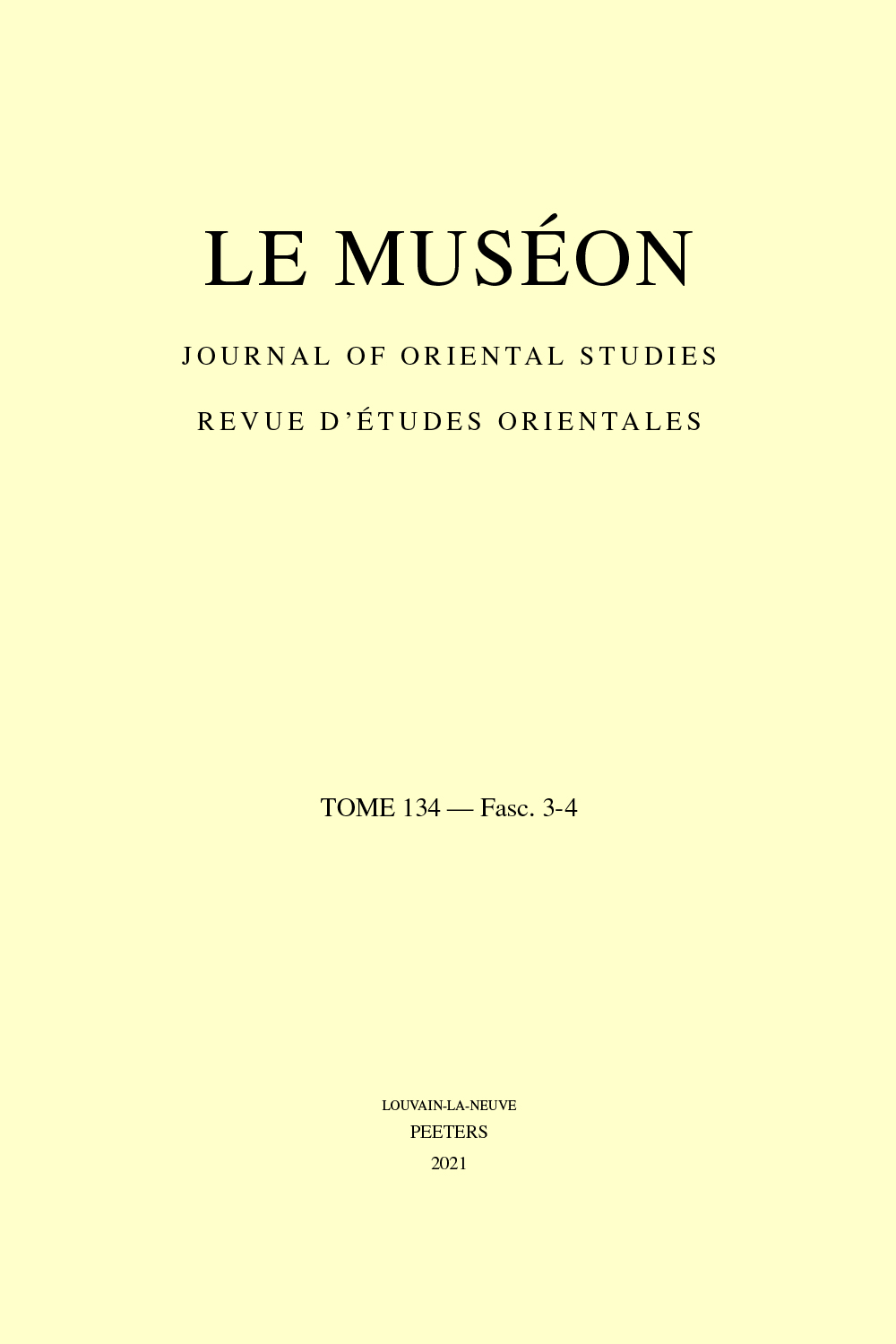next article in this issue  |

Preview first page |
Document Details : Title: À propos de l'origine du cunéiforme tel que pratiqué par les Hourrites Author(s): FOURNET, Arnaud Journal: Le Muséon Volume: 127 Issue: 1-2 Date: 2014 Pages: 1-18 DOI: 10.2143/MUS.127.1.3032655 Abstract : The paper presents the various writing systems that were used for the Hurrian language and tries to determine the origin and dating of the acquisition of cuneiform by the Hurrians of Anatolia. The most ancient varieties of cuneiform script all have peculiarities that can be used as markers when it comes to tracing a transmission to the Hurrians. Several varieties of Hurrian cuneiform can be described, which are sometimes irreconcilably different. On the whole the Hurrian cuneiform scripts originate in the Mesopotamian practices of the 3rd millennium, even if they integrate more recent developments. The Lion of Urkeš is probably the only document written in a system close to Sargonic Old Akkadian. The other Hurrian cuneiforms ('cuneifonts') seem to date back to practices that prevailed during the Ur III period, some close to Southern Babylonian and some others close to Central Mesopotamia. As a conclusion, even if Hurrian (and Hittite) cuneifonts resort to the same principle of gemination to contrast intervocalic consonants, this trick is an areal innovation, shared by varieties of cuneiform that cannot derive from the same source. There exist several scribal traditions that attest multiple acquisitions of cuneiform script by Hurrian speakers. |
|


